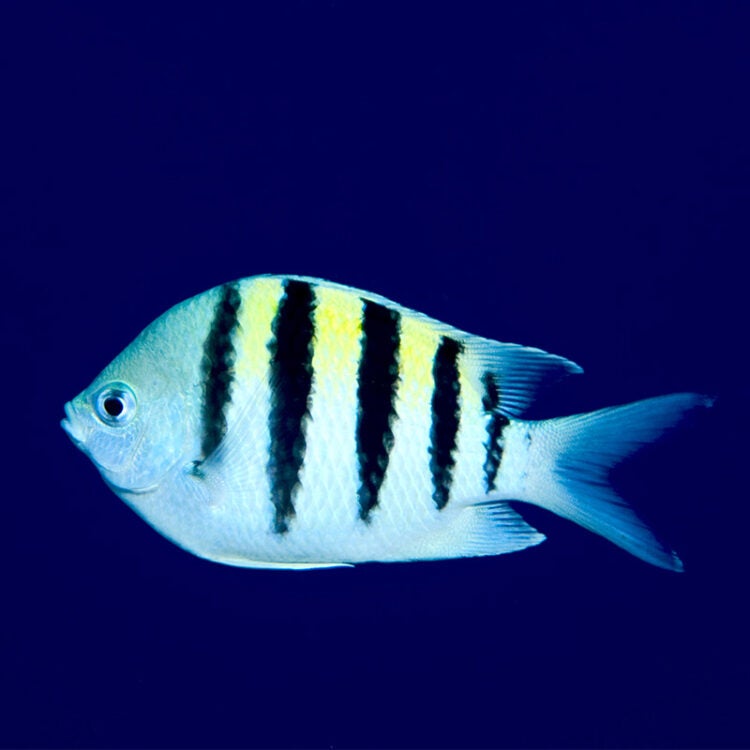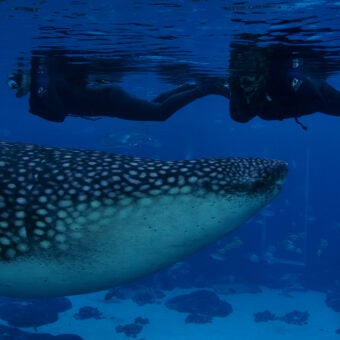-
Size
9 inches (23 cm) -
Diet
Algae, small crustaceans -
Range
Atlantic Ocean -
Habitat
Shallow coral and rocky reefs, sea grass beds
Physical Characteristics
- Adults can reach lengths of about 9 inches (23 cm) and weigh about 0.5 lb. (227 gm).
- Sergeant majors have five black vertical body bars; their upper body is usually yellow.
Animal Fun Fact
The sergeant major is a nest-building species and males will guard the eggs after spawning.
Diet / Feeding
- Consumes algae, small crustaceans and fish, as well as invertebrate larvae.
- Adults frequently form large feeding aggregates of several hundred individuals.
- Juveniles may form cleaning stations for green turtles, picking off algae, molting skin and parasites.
Range / Habitat
- Occurs on both sides of the Atlantic. In the Western Atlantic from Rhode Island to Uruguay, including the Gulf of Mexico, it is abundant on Caribbean reefs. It has also been reported from the mid-Atlantic islands and the tropical coast of West Africa.
- Adults are found over shallow coral and rocky reefs and sea grass beds at depths of about 50 feet (15 m). They usually form loose aggregations.
- Juveniles are common in tide pools and in floating sargassum.
Reproduction & Growth
- Oviparous- egg-laying species.
- Sergeant majors are a nest-building species: adult males clear a space on a hard surface such as on rocks, shipwrecks, pilings or outcroppings. The males guard the eggs after spawning and may adopt a bluish ground color during this period.
- The species is reported to spawn year-round in warmer locations.
Conservation Status
- “Least Concern” on the IUCN Red List.
Sources
- www.fishbase.org
- www.flmh.ufl.edu/fish
- Coral Reef Fishes. Lieske, E, and Myers, R.





